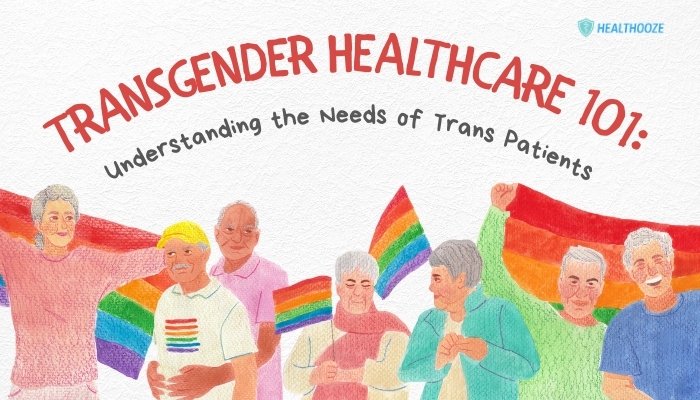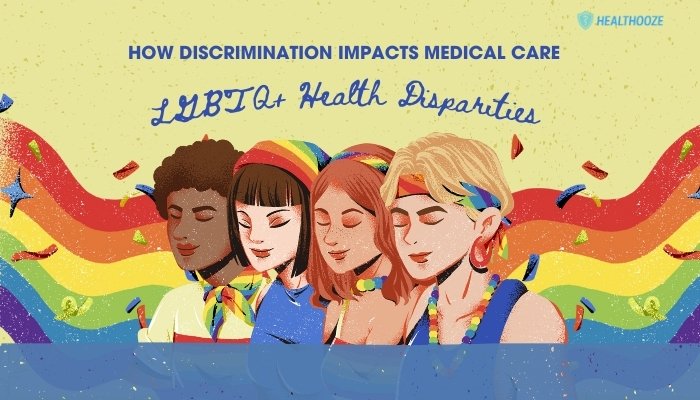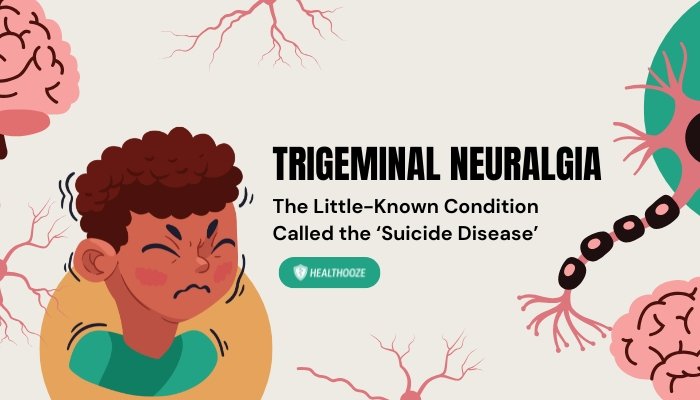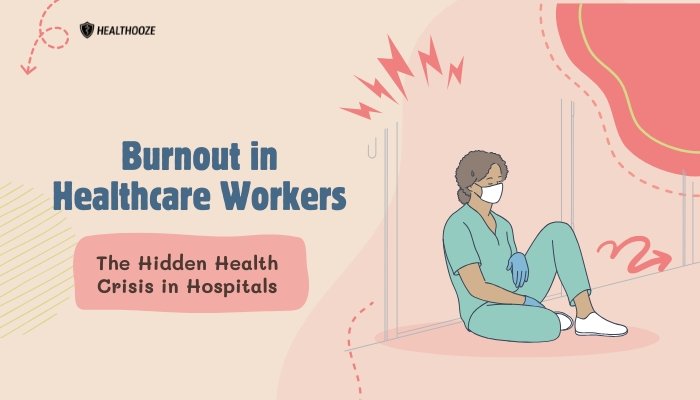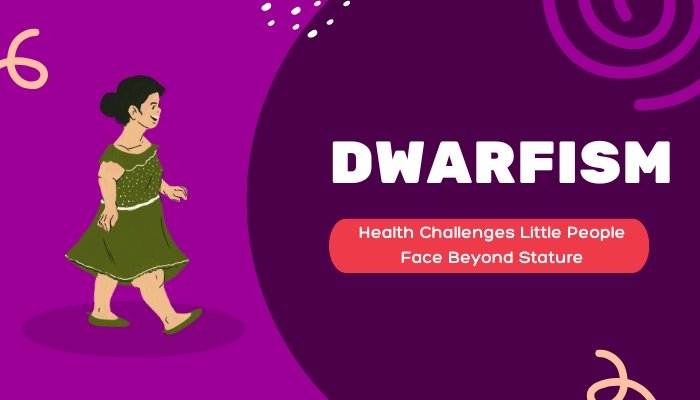Introduction
Transgender individuals face barriers in health services that can affect their physical, mental, and social well-being. These obstacles range from a lack of provider knowledge to societal stigma, causing some people to avoid or delay necessary care. The term “transgender” describes those whose gender identity differs from the sex recorded at birth.
A transgender man was assigned female at birth, while a transgender woman was assigned male at birth. Some transgender people do not identify strictly as men or women, recognizing a nonbinary identity. In all cases, each person has unique needs that influence every aspect of health.
This article offers a clear overview of transgender health, focusing on the medical, social, and psychological elements. It explains the foundational terms, highlights challenges trans patients face in accessing services, and describes best practices for gender-affirming care.
The primary goal is to equip readers with an understanding of how to support trans individuals in medical contexts. It covers hormone therapy basics, gender-affirming surgeries, mental health considerations, and practical ways to create inclusive environments.
Medical providers, families, and communities have an important role in reducing discrimination. Comprehensive and respectful treatment not only improves outcomes for trans individuals but also promotes equity.
This overview addresses common questions about transgender health, clarifies misconceptions, and outlines strategies for inclusive care. By adopting these approaches, clinics and health systems can offer services that reflect respect and understanding for all identities.
Transgender Terminology and Identities
Understanding Gender Identity
Gender identity is an individual’s self-conception as male, female, both, or neither. It exists apart from physical traits or the sex listed on official documents. This identity guides a person’s sense of self and can change over time. For many, gender identity aligns with the sex they were assigned at birth, making them cisgender. For transgender individuals, there is a difference between their innate identity and the sex assigned at birth.
Common Terms
- Transgender man (trans man): A person assigned female at birth who identifies as a man.
- Transgender woman (trans woman): A person assigned male at birth who identifies as a woman.
- Nonbinary: A person who does not see themselves exclusively as a man or a woman. They may use terms such as genderqueer, agender, or genderfluid.
- Gender dysphoria: Discomfort or distress related to a mismatch between one’s gender identity and assigned sex. Not all trans people experience dysphoria, but many seek interventions to relieve associated stress.
- Transition: The process of moving toward a presentation and identity that match one’s internal sense of self. Transition can include social changes (e.g., name, pronouns), legal changes (e.g., driver’s license gender marker), or medical interventions (e.g., hormone therapy).
Understanding these terms is important for respectful interactions. People often have unique ways of describing themselves and their identities. Asking politely about someone’s name and pronouns can help create an inclusive environment.
Health Disparities and Barriers
Transgender patients frequently experience worse health outcomes than their cisgender peers due to social stigma, economic issues, and a lack of proper care. These conditions can lead to delayed treatment, increased risk for mental health disorders, and higher rates of chronic disease. The major factors contributing to disparities include discrimination in health settings, limited provider expertise, and structural obstacles in insurance coverage.
Societal Stigma and Discrimination
Trans individuals face harassment or intimidation in clinics, hospitals, and other medical environments. They may worry about:
- Being misgendered or addressed by the wrong name
- Facing invasive or irrelevant questions about their body
- Receiving substandard or denied care
Negative experiences cause patients to avoid future interactions with providers. This avoidance can lead to untreated conditions, advanced stages of illness, and mental distress. Transgender people often feel unsafe disclosing their identity, leading to incomplete care. When key health details go unaddressed, providers cannot offer accurate guidance on screenings, hormone dosages, or other relevant interventions.
Financial and Insurance Challenges
Insurance policies may not cover all gender-affirming procedures. Some individuals pay out of pocket for hormone therapy, surgeries, or mental health services. This can create a financial burden that limits access. Many trans people also face employment discrimination, leading to lower income and fewer coverage options. Some insurance systems list transition-related procedures as “cosmetic,” despite evidence that these interventions improve mental health and reduce gender dysphoria.
Geographic Limitations
Rural regions often lack specialized services. Patients in these areas might travel many hours to see an endocrinologist familiar with hormone therapy or a surgeon competent in gender-affirming procedures. Limited transportation, scarce local providers, and financial constraints all add hurdles to regular checkups. The result is deferred care or suboptimal treatments if an individual cannot travel.
Lack of Provider Education
Medical training programs do not always include transgender health topics. Many providers may be unfamiliar with transition protocols or even the correct pronouns to use. In some cases, staff members only know outdated or offensive terminology. This lack of education can lead to inaccurate advice, misunderstandings about safe hormone doses, or improper follow-up care. When providers are well-informed, trans individuals report better outcomes and a greater willingness to seek timely help.
Mental Health Considerations
Mental health is a critical part of transgender well-being. Many trans individuals face stress related to social stigma, identity acceptance, family rejection, and concerns about passing or being recognized in daily life. These pressures can compound if someone also belongs to other marginalized groups.
Depression and Anxiety
Studies show elevated rates of depression and anxiety among trans populations. Possible contributors include:
- Harassment or bullying at school or work
- Fear of discrimination when seeking services
- Internal stress from hiding one’s identity
Early intervention and supportive counseling can help trans individuals find coping strategies. Acceptance from families, friends, and providers can also reduce symptoms of depression and anxiety.
Suicidality and Self-Harm
Rates of suicidal ideation and attempts are higher among trans youth and adults compared to the general population. Persistent rejection, isolation, and stigma can erode hope. Access to transition-related care is associated with a drop in suicidal thoughts. Positive relationships with family and community resources also build resilience. Mental health screening should be part of routine evaluations, especially during times of major life changes.
Gender Dysphoria Management
Not all trans people have gender dysphoria, but for those who do, it can cause severe distress. Specific interventions might include:
- Psychotherapy that addresses dysphoria and promotes self-acceptance
- Hormone therapy to align physical traits with gender identity
- Clothing, hairstyles, and pronouns that affirm self-image
A mental health professional with expertise in gender identity can guide this process and ensure that any coexisting mental health conditions are addressed, such as mood disorders or trauma.
Primary Care for Trans Patients
General Checkups
Primary care is the foundation of health for everyone, including trans individuals. Regular visits allow providers to:
- Monitor chronic conditions (e.g., hypertension, diabetes)
- Conduct screenings for cancers or sexually transmitted infections (STIs)
- Offer vaccinations based on standard guidelines
A trans man who still has a cervix might need cervical cancer screenings, while a trans woman who retains testicular tissue may need testicular evaluations if clinically appropriate. Clinicians must consider each patient’s anatomy, not just the gender they present as. A thorough approach respects individual differences in physiology.
Sexual Health
Sexual health services should be inclusive and clear. Discussions should cover:
- Safe sex practices
- STI prevention and testing
- Contraception needs for those who can become pregnant or whose partners can
- Information on fertility preservation if a patient wants biological children in the future
Providers who use neutral language when asking about sexual behaviors can reduce embarrassment. It helps to say “Do you have sex with men, women, or other trans individuals?” instead of making assumptions about orientation based on external appearance.
Cancer Screenings
Medical professionals must tailor screenings to a person’s anatomy. For instance:
- Breast Cancer: Trans women on estrogen may have breast development over time, leading to mammogram recommendations. Trans men with chest surgery may still retain some breast tissue and require evaluations if recommended by guidelines.
- Cervical Cancer: A trans man who has not undergone a hysterectomy still needs regular Pap tests.
- Prostate Cancer: A trans woman who retains the prostate may need checks if clinically indicated.
Encouraging regular screenings can help detect abnormalities early. Proper documentation and a clear medical history allow providers to advise specific tests for each patient.
Hormone Therapy Basics
Goals of Hormone Therapy
Hormone therapy helps align secondary sex characteristics with a person’s gender identity. It can reduce discomfort related to gender dysphoria and improve quality of life. The primary goals are:
- For trans women (MTF): Develop or enhance breast tissue, reduce facial and body hair, redistribute body fat, soften skin, and possibly alter emotional patterns.
- For trans men (FTM): Increase muscle mass, deepen voice, stimulate facial/body hair, redistribute fat toward a more masculine pattern, and possibly alter mood.
Hormones do not change bone structure significantly. They also do not alter height or the pitch range if the voice has already deepened or stabilized. Changes occur gradually, typically over months to years.
Common Medications
- Estrogen (for trans women): Promotes feminizing changes. Doses and formulations vary (oral, patch, injectable).
- Anti-Androgens (for trans women): Reduce testosterone levels and help estrogen work more effectively. Spironolactone is one example.
- Testosterone (for trans men): Induces masculinizing changes. It can be administered via injections, gels, or patches.
Monitoring and Side Effects
Hormone therapy requires regular monitoring of hormone levels, lipids, and organ function. For example, elevated liver enzymes or abnormal blood counts need further assessment. Some common side effects include:
- Possible changes in cholesterol profiles
- Shifts in libido
- Alterations in mood or energy levels
- Changes in blood pressure
Many patients also benefit from discussing fertility preservation before starting hormones, since long-term use can affect reproductive capacity. Providers should outline benefits and risks clearly. Informed consent is crucial.
Contraindications and Precautions
Some conditions may require extra monitoring. Providers might use caution if a patient has uncontrolled hypertension or a history of blood clots. In these cases, close follow-up or adjustments in medication can reduce risks. Smoking can increase complications, especially for older patients on estrogen.
Gender-Affirming Surgeries
Medical and surgical options for gender affirmation vary based on patient preference, health status, and resources. Each procedure can reduce dysphoria and enhance daily comfort, but not everyone opts for surgery. Access to skilled surgeons and funding can also limit availability.
Common Surgical Options for Trans Women
- Breast Augmentation: Some patients choose augmentation if hormone-induced breast growth is minimal.
- Orchiectomy: Removal of the testes, reducing testosterone production.
- Vaginoplasty: Creation of a vagina from existing tissue. Different techniques exist, such as penile inversion or intestinal grafts, depending on patient anatomy and surgeon expertise.
- Facial Feminization Surgery: Contouring the brow, jaw, or chin to create a more feminine appearance.
Common Surgical Options for Trans Men
- Top Surgery (Chest Reconstruction): Removal of breast tissue and reshaping the chest for a masculine contour.
- Hysterectomy: Removal of the uterus. Some opt for oophorectomy (removal of ovaries) at the same time to reduce estrogen levels and risk of future ovarian issues.
- Phalloplasty or Metoidioplasty: Creation or modification of male genitalia. Phalloplasty uses grafts from other areas of the body to create a penis, while metoidioplasty uses existing genital tissue enlarged by testosterone.
- Scrotoplasty: Formation of a scrotum, often with testicular implants.
Surgical Considerations and Recovery
Surgical recovery times vary. Patients must follow guidelines for wound care, limited physical activity, and follow-up visits. Some surgeries may involve multiple stages, especially those requiring grafts or implant placements. Mental health support throughout the process can help address emotional effects, manage pain, and set realistic expectations.
Complications can include infection, bleeding, or poor healing. Long-term follow-up is crucial. Surgery can improve body image and reduce dysphoria, but it does not fix every aspect of life. Maintaining open communication with care teams ensures continuity and addresses any emerging issues.
Creating Inclusive Healthcare Environments
Respectful Communication
Using the correct name and pronouns is an essential part of care. Providers should introduce themselves and politely ask how patients prefer to be addressed. If staff members make a mistake, they can correct themselves and move on. Prolonged apologies can draw unnecessary attention. Simple, clear efforts build trust.
Intake Forms and Records
Medical offices should update intake forms to include options beyond “male” and “female.” Many clinics now use “assigned male at birth” and “assigned female at birth” or add space for patients to define their gender identity. Electronic health record systems should allow changes to names and pronouns without losing insurance data. Accurate records prevent confusion during referrals or billing.
Staff Training
Ongoing education fosters a compassionate environment. Workshops can teach:
- Basic terminology (transgender, nonbinary, gender dysphoria)
- Communication skills (pronoun usage, addressing personal questions)
- Health needs (hormone therapy basics, relevant screenings)
- Privacy protections (confidential handling of sensitive information)
Trained staff can answer questions and address concerns. They also set a positive example for new team members. Even small efforts, such as placing inclusive posters in waiting rooms, can signal acceptance.
Physical Space
Creating a safe environment can also involve:
- Gender-neutral restrooms
- Private areas for changing or exams
- Design choices that avoid stereotypes in décor or language
Patients should see themselves reflected in educational materials. Brochures that show trans individuals or mention trans-specific health topics can help. Photos and references to inclusive programs offer practical reassurance.
Legal and Policy Implications
Insurance Coverage
Insurance plans often exclude certain gender-affirming procedures. Over time, some regions have introduced regulations requiring coverage for hormone therapy and surgeries. However, coverage details vary widely. Patients might need letters of support from mental health professionals or specialists to qualify. Clinicians can help by writing thorough documentation on the necessity of care.
Identification Documents
Legal changes to names and gender markers differ by location. Some jurisdictions demand proof of surgery, while others only require a physician’s note affirming the patient’s gender. This inconsistency can cause significant stress. Care teams can provide resources or direct patients to legal assistance to update driver’s licenses, passports, and other documents.
Anti-Discrimination Protections
In some areas, laws prohibit discrimination based on gender identity in health care, housing, and employment. Where such laws do not exist, trans people may lack basic legal protections. Fear of legal consequences or harassment can discourage patients from speaking openly about their needs. Advocacy groups often push for new legislation to standardize protections.
Specific Populations Within the Trans Community
Trans Youth
Trans youth are especially vulnerable. They may face bullying at school, unsupportive home environments, or a lack of pediatric providers who understand gender identity. Early social transition can improve mental health if the child is clear about their identity. Puberty blockers can prevent unwanted physical development, giving adolescents time to decide on long-term plans. Mental health support and family counseling can reduce stress and foster acceptance.
Nonbinary Individuals
Many health forms focus on binary categories. Nonbinary people might choose partial hormone regimens or have no interest in surgeries. Care must be flexible. Providers should not assume a patient wants or needs a full transition. Instead, open discussion about goals is vital. Some nonbinary individuals prefer using they/them pronouns or other neo-pronouns. Providers who respect these needs improve satisfaction and follow-through.
Trans People of Color
Racial and ethnic minorities in the trans community often experience more severe discrimination. They may already endure racism in workplaces or clinics. Combining trans identity with race can lead to higher rates of violence, lower incomes, and fewer options for safe housing. Providers must address these overlapping issues by offering resources and understanding the social context in which patients live.
Elder Trans Adults
Older trans individuals may have transitioned decades ago without the support systems that exist today. They might have faced a lifetime of rejection or difficulty finding jobs. Health care professionals serving older trans patients should screen for isolation, mental health needs, and chronic conditions. Some may have medical histories that reflect older transition protocols. Documentation or prior surgeries might complicate modern treatments. Sensitivity and careful review of records are essential.
The Role of Mental Health Professionals
Evaluations and Letters of Support
Some surgeries or hormone regimens require mental health evaluations. Therapists or psychologists write letters confirming a patient’s readiness and the medical necessity of treatment. This process should not be a gatekeeping tactic. Instead, it aims to ensure patients understand risks, have stable mental health support, and can set realistic expectations for outcomes.
Therapy and Counseling
Gender-focused therapy can help individuals navigate identity, relationships, and emotions related to transition. It also addresses any co-occurring issues such as depression, anxiety, or PTSD. Group therapy sessions or community-based support can connect patients with peers who have similar experiences.
Family Counseling
Families often need guidance to understand a loved one’s identity. Parents might worry about hormone side effects, social stigma, or spiritual beliefs. Couples can also benefit from counseling if one partner transitions, changing aspects of the relationship dynamic. In these sessions, mental health professionals can present accurate information and help family members communicate without blame or shame.
Fertility and Family Planning
Fertility Preservation
Hormone therapy can affect fertility. Estrogen may reduce sperm production, while testosterone may decrease ovulation. Some trans people choose to bank sperm or freeze eggs before starting hormones. Surgery that removes reproductive organs makes fertility impossible in most cases, unless options such as storing ovarian or testicular tissue are explored. Access to fertility preservation varies, and costs can be high. Providers should discuss these issues early to allow informed choices.
Pregnancy and Parenthood
Many trans men retain reproductive potential if they still have ovaries and a uterus. Trans women with sperm production can also conceive or donate sperm. Surrogacy or adoption are additional paths to parenthood. Inclusive services ensure trans parents receive respectful care, from prenatal checkups to postpartum support. Using correct names and pronouns during pregnancy or parenting classes helps families feel acknowledged.
Community Support and Resources
Peer Support Groups
Local or online groups bring together individuals who share trans experiences. These networks often provide:
- Shared knowledge about safe providers
- Emotional support in facing discrimination
- Practical tips for legal document changes or hormone regimens
- A sense of solidarity that counters isolation
Many community centers, LGBTQ+ organizations, or social media platforms can direct patients to these groups.
Advocacy Organizations
Nonprofit groups champion trans rights in politics, healthcare, and legal systems. They raise awareness and challenge discriminatory practices. Some organizations publish directories of trans-friendly providers. Others organize events such as health fairs or legal clinics. Connecting with these groups can help patients find specialists, financial aid, and supportive communities.
Educational Materials
Many clinics distribute brochures or fact sheets on transgender health. Topics might include hormone therapy side effects, guidelines for safe binding or tucking, and explanations of legal protections. Online resources can also clarify insurance questions. Accessible, user-friendly materials reduce confusion and promote self-advocacy.
Practical Tips for Providers
- Use Affirming Language
- Ask about preferred names and pronouns.
- Avoid assumptions based on appearance or voice.
- Practice consistent, respectful communication.
- Offer Visible Inclusion
- Display signage or pamphlets that reflect diverse identities.
- Maintain a zero-tolerance policy for discriminatory remarks.
- Update Forms and Records
- Include gender identity options beyond male/female.
- Ensure systems allow changes to legal name or pronouns.
- Keep records of any surgical or hormonal interventions to guide screening schedules.
- Seek Continued Education
- Attend workshops or online courses focused on transgender healthcare.
- Consult with specialists to update practice guidelines.
- Encourage staff discussions on creating a welcoming environment.
- Coordinate Care
- Collaborate with mental health professionals, surgeons, or endocrinologists.
- Offer referrals to community resources when appropriate.
- Provide consistent follow-up, especially if patients begin hormone therapy or plan for surgery.
By applying these steps, clinics can improve trust and satisfaction among transgender patients.
Future Directions in Transgender Healthcare
Transgender healthcare evolves as knowledge grows and society’s perspective shifts. Some areas of potential development include:
- Expanded Access: Telehealth can help patients in remote areas receive consultations from endocrinologists or therapists.
- Research and Data Collection: Ongoing studies about hormone regimens, surgical outcomes, mental health interventions, and cultural factors can refine best practices.
- Policy Changes: Wider insurance coverage and nondiscrimination laws can reduce the financial and legal barriers that trans people face.
- Integration of Care: A coordinated approach that includes primary care, mental health, and specialized procedures promotes continuity.
- Inclusion in Medical Curricula: More comprehensive training about transgender health for future doctors, nurses, and allied professionals.
Understanding the diverse needs of trans populations remains a dynamic process. Each patient is unique, and health professionals should stay open to feedback, peer-reviewed research, and emerging guidelines.
Conclusion
Transgender healthcare involves more than just hormone therapy or surgeries. It requires ongoing respect for each individual’s identity, an environment free of judgment, and an awareness of how social conditions affect well-being. When providers embrace inclusive practices, they help trans individuals achieve better physical and mental health.
Comprehensive care includes supportive counseling, proper screenings, fertility discussions, and clear communication. Barriers such as stigma, insurance hurdles, and limited knowledge in medical settings can be reduced through training and policy reforms. The future holds promise for improved health equity as more clinics adopt best practices and more trans individuals access the services they deserve.
Transgender patients come from a range of cultural and demographic backgrounds. A one-size-fits-all approach does not work. Customized care recognizes each person’s goals, medical history, and identity. By showing willingness to learn and adjust, health providers can establish rapport, trust, and positive outcomes. Ultimately, providing affirming care sends a message that every individual’s health matters and that respectful treatment should be the standard in all clinical settings.
Table: Key Challenges and Strategies in Transgender Healthcare
| Challenge | Strategy |
| Lack of Provider Knowledge | Provide ongoing education on trans health, pronouns, and cultural needs |
| Discrimination in Clinical Settings | Implement clear non-discrimination policies, inclusive intake processes |
| Financial Obstacles | Advocate for expanded insurance coverage and flexible payment solutions |
| Limited Access to Specialists | Use telehealth or referral networks to connect patients with experts |
| Fear and Distrust | Foster respectful communication, protect privacy, and display affirming cues |
| Mental Health Risks | Offer therapy, counseling, and peer support groups |
| Legal Document Complexities | Guide patients on name, gender marker changes; connect them with legal aid |
| Surgical and Hormonal Complications | Monitor closely, coordinate care with experienced teams, discuss risks |
References
- Coleman E, Bockting W, Botzer M, et al. Standards of care for the health of transsexual, transgender, and gender-nonconforming people. Int J Transgend. 2012;13(4):165–232.
- Deutsch MB. Overview of gender affirming treatments and procedures. UCSF Transgender Care. 2016;1:1–12.
- Reisner SL, Poteat T, Keatley J, et al. Global health burden and needs of transgender populations. Lancet. 2016;388(10042):412–436.
- Safer JD, Tangpricha V. Care of the transgender patient. Ann Intern Med. 2019;171(1):ITC1–ITC16.
- Wylie K, Knudson G, Khan SI, et al. Serving transgender people: clinical care considerations and service delivery models in transgender health. Lancet. 2016;388(10042):401–411.
- World Professional Association for Transgender Health. Standards of Care: Eighth Edition. 2022.
- Baker KE. The future of transgender coverage. N Engl J Med. 2017;376(19):1801–1804.
- Grubb HM, Hutcherson HA, Amiri S. Healthcare barriers among transgender adults in the US. Health Serv Res Manag Epidemiol. 2021;8:1–5.
- James SE, Herman JL, Rankin S, et al. The Report of the 2015 U.S. Transgender Survey. National Center for Transgender Equality. 2016.
- Unger CA. Hormone therapy for transgender patients. Transl Androl Urol. 2016;5(6):877–884.
- Center for American Progress. Discrimination Prevents LGBTQ People from Accessing Health Care. 2020.
- Giblon R, Bauer GR. Health care availability, quality, and unmet need. Am J Public Health. 2017;107(4):e1–e8.

